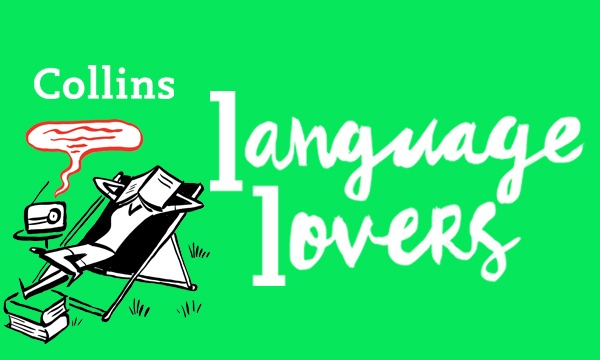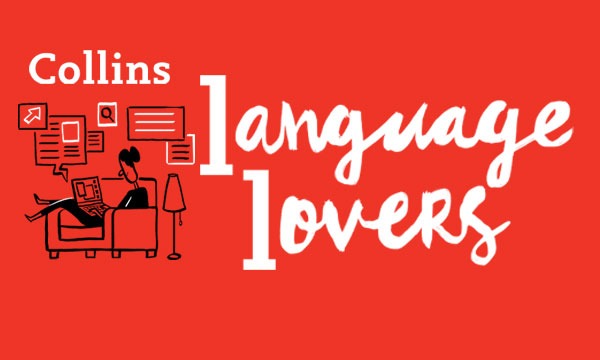Think Scotland, see tartan.
From shortbread biscuit tins to carpets to the kilts of the Tartan Army, this pattern shouts ‘Scotland’ louder than any other nation’s symbol. And who among us has never owned a tartan travelling rug or picnic rug?
It’s not every day, metaphorically, we give a fabric pattern a commemorative ‘day’. But for tartan, the world makes an exception when it celebrates this icon of Scottishness and the inestimable contribution the Scots and the Scottish diaspora have made to the world and world culture, of which Collins dictionaries are one modest example. So symbolic is tartan that it’s the basis for the humorous tartanalia, describing clichéd artistic representations of Scottishness.
Tartan Day is a movable feast. When we celebrate it depends on where in the world we are. In Canada and the US, with their huge Scottish diaspora, historical and contemporary, it falls on 6 April, the date of the signing in 1320 of the Declaration of Arbroath, in which the Scottish earls and barons appealed to the Pope to recognise Scotland’s independence from England and to confirm Robert the Bruce as King.
In New Zealand and Australia, International Tartan Day falls on 1 July, the date of repeal of the 1746 Dress Act (also known as the Disclothing Act), banning the wearing of tartan by men and boys in the Highlands other than lairds and Highland regiments of the British army.
The big event is the tumultuous Tartan Parade in New York City, this 5 April. And Edinburgh will celebrate its own inaugural Tartan Day on 10 May with pipe bands, dancers and clan tartans à gogo.
What’s in a name?
But what exactly is ‘tartan’? In essence, as Collins Cobuild puts it, it’s a ‘design… made up of lines of different widths and colours crossing each other at right angles’, and, of course, any fabric with that pattern. That definition, however, does meagre justice to the potential rainbow of tartan shades, tones, hues and colour combinations, from the zingy reds and yellows of the Macmillan dress tartan to the more muted, retiring colours of the Bell Border, which would be my tartan – if I ever wore it in honour of my remote Scottish ancestry. The most comprehensive definition is to be found on the website of the Scottish Register of Tartans.
What’s crucial is that tartan originally referred not to the pattern as such but to the weave, and even into the nineteenth century merchants were ordering ‘plain coloured tartan’ from weavers. Tartan is a form of twill weave, in which the horizontal weft is woven two under then two over the vertical warp.
The weave is what gives the name, which comes not from Gaelic but is an adaptation of the French loanword tertaine or tiretaine, a linsey-woolsey cloth made of a mixture of linen and wool.
Chinese tartan?
So tartan is a home-grown Scottish phenomenon, right?
Not exactly. Archaeological evidence suggests that fabrics similar to tartan were woven in various cultures across Europe, including by the Celts. The oldest known tartan fabric was found on the mummified body of the red-haired European Chärchän Man in the Tarim Basin in Xinjiang, China. He was wearing tartan leggings, a remote antecedent, if you like, of modern tartan trews, worn historically by certain Highland regiments. The oldest scrap of tartan fabric found in Scotland is the Falkirk tartan, dating to ad 250, which tamped down a hoard of 2,000 Roman coins in a pot. Its herringbone pattern of undyed yarn in shades of brown is a far cry from the colourful stereotype of modern tartans. Much more colourful is the oldest example of what we’d instantly recognise as tartan, the sixteenth-century Glen Affric tartan, with its warm mustard and russet tones.
Since then, tartan patterns have gone on to achieve their greatest flowering in Scotland, to the extent that the Scottish Register of Tartans holds more than 7,000 different patterns. Forty-one US states have their own officially registered tartan; Canada has its ‘Maple Leaf’ tartan adopted nationally in 2011; and Japan has various tartans, including ‘Sakura’, a cherry blossom-inspired tartan in pale pink and light green. Ivanka Trump, too, has her own tartan, as does a York Punch of Punch and Judy fame.
Tartan cloth was woven as a sort of cottage industry in the Highlands. Spinning the yarn was done on hand-held drop spindles. Weaving it with a markedly thicker weft than warp in 2/2 twill produced a cloth 50 per cent heavier than a simple 1/1 weave and hence more suited to the rigours of the Highland climate. Though different areas might produce different patterns, depending on the local availability of dyestuffs, there’s precious little evidence that different clans had distinct, recognisable patterns before the nineteenth century. There was no ancient clan tartan semiotics.
The tartan pattern is mathematico-geometric. There’s even a formula: T = (B + 1)B/2, where B is the number of basic colours and T the total number of colours in the final product. The most elaborate tartan is, apparently, the riotous Ogilvie tartan, also known as the Drummond of Strathallan tartan, with its approximately 96 colour changes. Some clever clogs can no doubt work back to the number of colours in it.
Tartan-clad kings
What is clear is that by the sixteenth century, wearing tartan cloth had spread beyond the Highlands. Written references probably predate 1500, and by 1533 the accounts of the Treasurer of Scotland record ‘Ane uthir [another] tartane galcoit [coat or jacket] gevin to the King [James V] be the Maister Forbes’. Five years later, the Treasurer records King James receiving lengths of ‘heland tartane’ (Highland tartan) to be made into hose. (I bet they were cosy.)
When in Scotland, the current King is often to be seen sporting a kilt in the Balmoral tartan, the pattern of which was designed by Prince Albert, Queen Victoria’s consort, in 1853. Alternatively, he might wear the more colourful 2023 King Charles III tartan, designed by the Scottish Tartans Authority, with its appealing mixture of the traditional hues red, blue and green. It’s based on the sett of the Balmoral tartan, meaning, apart from a badger’s home, the essential unit of tartan patterning, which is a square, composed of a number of rectangles, square and oblong, arranged symmetrically around a central square.
Earlier than either of the historic references just mentioned is a reference to lengths of plaid, a word now synonymous with tartan, especially in the US. The first images that unmistakably show tartan are from the early seventeenth century. One illustrates soldiers wearing tartan trews or the belted plaid or ‘great kilt’ wrapped over the shoulder and then wrapped round the waist, somewhat like a sari, and secured with a belt, which is a forerunner of the modern kilt.
Though one might assume kilt to be from Gaelic, its origin is ultimately Scandinavian, related to Old Norse kilting, ‘a skirt’. It first appears in the 1746 Dress Act, mentioned earlier, ‘for restraining the Use of the Highland Dress’, where it’s called the ‘philibeg or little kilt’. Philibeg or filibeg and several other variants are sometimes used today in the US instead of kilt. The word comes from the Gaelic for ‘fold’ and ‘little’, feileadh and beag.
Tartan as rejection
The 1746 Act banning the wearing of ‘Highland Dress’ was repealed on 1 July 1782. In the interim, putting on tartan symbolised opposition to the Union with England and support for the Jacobite cause, which sought to restore the Stuarts to the throne of Great Britain, and so was worn by many outside the Highlands. (In any case, Highland dress was never banned for women, noblemen or soldiers.)
Eighteenth-century portraits of elite sitters show them with tartan garments. Most piquantly, Bonnie Prince Charlie by Allan Ramsay and his oarswoman saviour, Flora Macdonald, are each portrayed wearing tartan. The National Museum of Scotland holds several examples of glorious eighteenth- and early nineteenth-century tartan outfits which can be viewed here and here. The Highland dress King George IV wore on his 1822 triumphant visit to Edinburgh as painted by Sir David Wilkie must have been equally dazzling.
Those outfits with their splendid reds graphically illustratethe great nineteenth-century tartan revival, kick-started by King George IV’s visit, which was orchestrated by the great ringmaster of Scottishness, Sir Walter Scott.
Tartan in girth
Given men’s kilts start at waist level, they’re not ideal for the fuller figure. And when it comes to fullness of figure, King George shone: five foot two, with a waistline of 51 inches at its most expansive, he finally weighed in at twenty stone. Now, the hem of a kilt should come midway down the kneecap. When you try one on, you kneel, to check. Wilkie’s undoubtedly flattering portrait in the Royal Collection of the king in a Royal Stewart tartan shows the kilt hanging inelegantly above the kneecaps. His legs, fortunately, were encased in flesh-coloured pantaloons for warmth. The shortness of the kilt caused great amusement; some wag quipped, ‘Since he is to be amongst us for so short a time, the more we see of him the better!’
Tartan in space
Who can say whether King Georgie Porgie, Pudding and Pie wearing it was the nadir or zenith of tartan? Or could that have been when Vivienne Westwood popularised tartan minis and trousers as a sign of punk rebellion? Two key moments in tartan’s history are exceptionally noteworthy. The first colour photograph – as it happens, by another member of that army of Scots pioneers, the physicist James Clerk Maxwell – was of a tartan ribbon in 1861. And the fourth person on the moon, Alan Bean, part of the Apollo 12 mission, took a swatch of the MacBean tartan up to the moon … and, not being an astronomical litter lout, brought it back.
As this is my last post for a while, it only remains for me to bid you a fond farewell and wish you all and the inimitable Collins team slàinte mhath (ˌslɑːndʒə ˈva).
By Jeremy Butterfield
Jeremy Butterfield is the former Editor-in-Chief of Collins Dictionaries, and editor of the fourth, revised edition of Fowler’s Dictionary of Modern English Usage.
All opinions expressed on this blog are those of the individual writers, and do not necessarily reflect the opinions or policies of Collins, or its parent company, HarperCollins.



